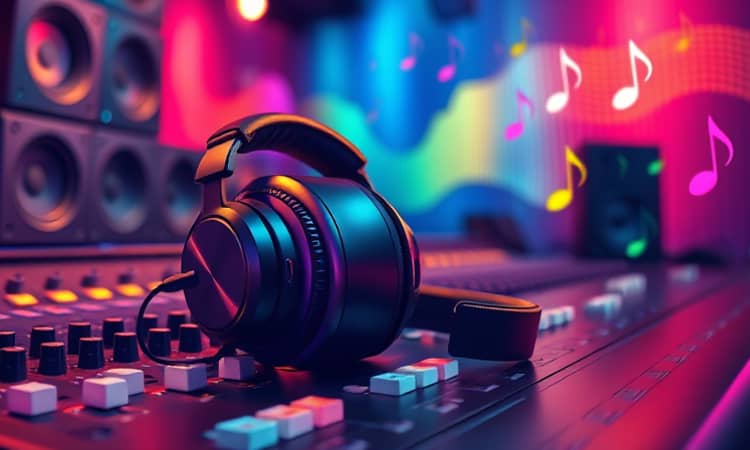Choosing the right headphones is a critical step for any audio professional. Whether you’re tracking, mixing, or mastering, the ideal pair can transform your workflow and elevate your sound.
Understanding Different Headphone Types
Studio headphones fall into two main categories, each serving distinct roles in the production process. Knowing their differences helps you select the right tool for every session.
- Closed-Back Headphones: Designed to offer excellent sound isolation and minimal audio bleed, these are perfect for tracking vocals and instruments, as well as DJ monitoring.
- Open-Back Headphones: Favored for mixing and mastering, they deliver a natural, spacious soundstage and honest response, though they leak sound and are less suited for recording in noisy environments.
Key Factors to Consider
Before making a purchase, evaluate these critical aspects to ensure your headphones meet professional standards and personal preferences.
Sound Accuracy
Seek a pair with a neutral or flat frequency response so you can trust your mixing decisions without exaggerated bass or harsh treble.
Comfort
Long sessions demand plush ear pads, lightweight designs and adjustable headbands to minimize fatigue and maintain focus.
Impedance & Sensitivity
Consider headphone impedance (measured in ohms) and sensitivity (dB/mW). Low-impedance models are easy to drive by most devices, while high-impedance versions often require a dedicated amp for optimal clarity.
Durability & Build Quality
Professional use calls for replaceable ear pads and detachable cables, backed by robust materials that withstand daily wear and tear.
Isolation & Leakage
Closed-back units excel in isolation, blocking external noise and preventing bleed. Open-back units sacrifice isolation for a wider, more realistic soundstage.
Accessory Options
Look for models with multiple cable types—coiled, straight, short, long—and gold-plated connectors to ensure reliable signal transfer.
Specifications at a Glance
Understanding key specs helps you compare models objectively, though real-world listening tests remain indispensable.
Leading Brands and Models
- Sennheiser HD 400 PRO (open-back, 120 Ω) – ideal for mixing and mastering in controlled environments.
- Beyerdynamic DT 1990 PRO (open-back, 250 Ω) – known for extreme precision in the highs and lows.
- Audio-Technica ATH-M50x (closed-back, 38 Ω) – versatile, comfortable, with detachable cables and replaceable earpads.
- Audiophile-level offerings from AKG, Focal, Shure, Audeze, and Austrian Audio cater to both entry-level and high-end budgets.
Budget and Price Ranges
Professional headphones span a wide price spectrum. Select the tier that aligns with your needs and budget.
Entry-Level ($70–$120): Great for beginners and home studios. Models like Audio-Technica ATH-M20x and Samson SR850 deliver solid performance without breaking the bank.
Mid-Range ($150–$300): The sweet spot for serious producers. Expect reliable comfort, robust build, and accurate sound from models like ATH-M50x and Sennheiser HD 400 PRO.
High-End ($400+): Specialty mastering and audiophile options from Audeze or Focal. These deliver exceptional detail but may exceed the needs of most music production workflows.
Practical Tips for Real-World Use
Actual listening performance often outweighs spec sheets. Rely on trusted reviews and personal trials to gauge real-world sound.
Compatibility matters. Match headphone impedance to your audio interface or amp to avoid weak output or distortion.
Prioritize durability for studio and live use by choosing models with swappable parts.
Comfort and fit are non-negotiable during marathon mixing or tracking sessions; test different headband and earpad designs whenever possible.
Latest Recommendations (2024–2025)
For mixing and mastering, open-back models like the 2025 Sennheiser HD 400 PRO and Beyerdynamic DT 1990 PRO are top picks. Closed-back favorites for tracking include the ever-reliable ATH-M50x. Entry-level producers will appreciate the Samson SR850 and Superlux HD 681 for their budget-friendly performance.
FAQs and Common Myths
- Myth: “Wider frequency range always means better sound.”
Reality - Myth: “Expensive equals superior for all genres.”
Reality
Practical Takeaways
For mixing and mastering: prioritize open-back models with flat, extended response and a wide soundstage.
For recording and tracking: opt for closed-back headphones for tight isolation and minimal bleed during live sessions.
Always try before you buy, when possible, to ensure comfort, compatibility, and a sonic profile that complements your creative vision.
References
- https://www.musicradar.com/news/the-best-studio-headphones-top-headphones-for-music-production
- https://sonicscoop.com/best-headphones-for-mixing-and-mastering-the-ultimate-buyers-guide/
- https://theghostproduction.com/music-production-headphones-2025/
- https://www.rtings.com/headphones/reviews/best/studio
- https://www.sonarworks.com/blog/product-news/new-ebook-released-best-pro-studio-headphones-guide-for-2025
- https://www.audio-technica.com/en-us/ath-m50x
- https://www.soundcore.com/blogs/headphones/what-should-you-look-for-when-you-buy-new-headphones
- https://www.soundonsound.com/sound-advice/studio-headphones-everything-you-wanted-know














